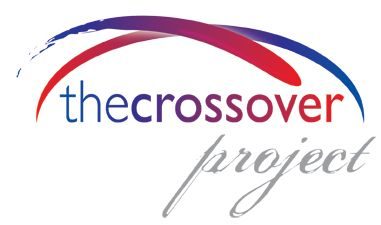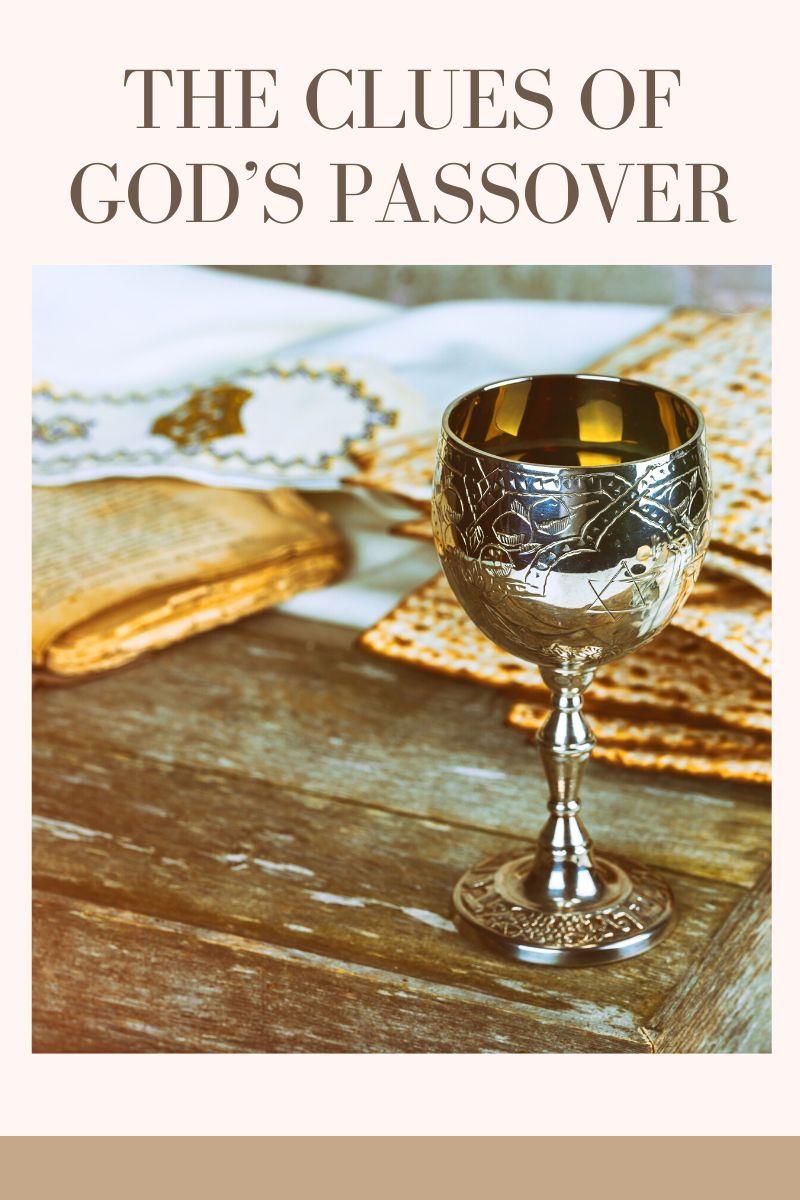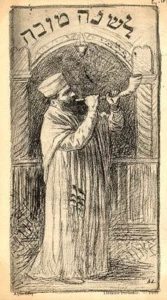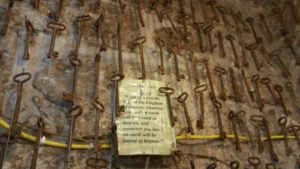by Victoria Sarvadi in Grace & Peace
I hear many people, Jews and Christians alike, calling the festivals and assemblies of Leviticus 23 “Jewish Holidays.” And while I agree it is the Jews who reverently honor these Holy days, it is the voice of the Lord, who poignantly declares; “These are my feasts.”
And the Lord spake unto Moses, saying, Speak unto the children of Israel, and say unto them, concerning the feasts of the Lord, which ye shall proclaim to be holy convocations, even these are my feasts (Leviticus 23:1-2 KJV).
I deeply appreciate the Jewish disciples of the first-century movement called “The Way of Yeshua” who obeyed the commandment of our Lord, Jesus to take the good news of the Jewish Messiah to all the Pagan nations—nations of which I am a descendant.
In ancient times, all other nations except Israel worshiped Pagan gods such as Molech, Eshtar, and Ba’al. They appeased their gods through virgin and child sacrifices. They allowed the demonic hoards to use them in frenzied dances, orgies and drunken rituals. But Israel’s God in His mercy, desired fellowship with all who would hear His voice, so He pursued the people of the nations even though they were not asking Him to.
When the message of salvation and deliverance was introduced to the Gentiles, many welcomed it with open arms as they learned the foreign “ways” or behavior of the Jewish faith and a loving God. They learned of the Ten Commandments and the wonderful teachings of the Jewish Savior. They relished in the message of forgiveness, and as they grew to love Jesus, they desired to know what it meant to obey His commandments.
For several centuries, the new Gentile converts learned the ways of the original apostles through their disciples. These Jewish church fathers taught them morals and behaviors from the Torah and the scriptural customs that were known as the Feasts of the Lord.
It wasn’t until the fourth century during the time of the world Emperor, Constantine the Great, the faith of Yeshua was de-Judaized. Constantine, an Anti-Semite hated the Jews, but being a poly-theist, he liked the teachings of Jesus and especially his virgin birth and the great miracles that were associated with His Name. After changing the Sabbath to Sunday and eliminating the Feasts of the Lord, he added the Pagan observance of Eshtar, the fertility god and the celebration of Nimrod, which was observed on December 25th. Constantine instituted a catholic (or universal) religion and required everyone in the Empire to be baptized into it.
As the Church slipped into its darkest ages with the selling of indulgences to get one’s soul into heaven and requiring penance and self-flagellation for sins, God started calling on his servants to seek reformation. Throughout the next one thousand years to the present time, the Church has been waking up from a spiritual amnesia and setting itself back on a road to restoration. Restored that is, back to the beginning, before the reformation, before Constantine’s universal religion to the time of Yeshua, the matrix of the faith. Restored not to faith in Jesus but the faith of Jesus.
In order for believers to understand the faith of Jesus we need to see what His customs and traditions were and why He valued them. We need to know what was important to Him and how He actually lived out His Faith.
We know from Scripture that Yeshua greatly desired to spend the beloved feast called Pesach (Hebrew for Passover) with His disciples as it says in Luke 22:15 WBT; He said to them, I have earnestly desired to eat this passover with you before I suffer.
What was Yeshua’s reasoning and passion for sharing the Passover with his disciples? We first need to go back and understand what the Jews understood about Passover. Passover was considered a rehearsal of deliverance. The rabbis taught that one day the Messiah would come and redeem all those who desired to be delivered from the slave master of sin. The traditions of Passover were clues that pointed to Messiah. Those who were looking realized that Yeshua was the One who was crucified at Passover when all the Passover lambs were being slain. They were realizing that He was innocent (without sin) but was buried at sunset at the onset of the Feast of Unleavened Bread when every Jewish home was cleaned of all leaven (which represented sin). And then, those who heard He resurrected were also making the connection that He was raised on the Feast of First Fruits being the first-born or “the first fruit” of the dead.
The Hebrew word for feast in the original Scripture is moedim. Moedim can better be translated in English as “appointments” and in this context, “appointments with God.” If God said to me that He wanted to make an appointment with me, that He was marking it down on His calendar, and He expected to meet me at that time, I can’t imagine not showing up! Can you?
Throughout Scripture, God has called appointments with His people. He never changes and His Word is the same – yesterday, today and forever. So, how do we integrate these appointments with God—these timeless traditions of feasts into our lives as Christians? It begins with a desire to restore the modern faith we know today to the more organic faith of the first century Jesus.
A Timely Reminder
The feasts of the Lord could be considered God’s time clock for His Plan of advancing His Kingdom and carrying out His plans of:
1). Redemption (The first coming as the suffering Servant, Redeemer and Lamb of God)
2). The Restoration of All Things (The second coming as King of Kings and Lord of Lords)
The clock has two parts; the Spring/Summer events, which correlate to the first harvest and the Fall events, correlating to the latter harvest. The two harvests are actually the two comings of Messiah to this Earth. Messiah came the first time as the Passover Lamb, the Lamb of God and the Lamb that was slain. He came to pay the penalty of sin. He came as Redeemer and the way to have access unto the Father. In the Talmud (the ancient Scripture commentary of the rabbis), this first Messianic manifestation of God is referred to as Messiah Ben Joseph.
This is interesting because Jacob’s son, Joseph (a type to the Messiah), being sold into slavery by his brothers became second in command to the Egyptian Pharaoh. When his brothers appealed to him for help during the drought, they did not recognize him as he looked like a Gentile and not like an Israelite. It is also noteworthy to point out that Joseph’s son, Ephraim, when being blessed by his grandfather, Jacob, was told that his future generations would be called the melo hagoyim (the fullness of the Gentiles). It is obvious to the world that the first coming of Messiah that is Jesus, appealed greatly to the Gentiles. Except for Yeshua’s disciples and band of followers, the Jews as a nation did not recognize him.
The second Messianic coming is the Messiah in His Glory as King and Judge over all the Earth. It is understood at the second coming of Messiah as the King of Kings, the enemies of God would be judged, and the Messiah would physically liberate His people from oppression and slavery. The Talmud calls this Messianic manifestation Messiah Ben David.
This makes perfect sense as the Apostle Paul said that when the fullness of the Gentiles (melo ha goyim – which is the prophecy concerning Ephraim) has come then God will take away blindness from Judah. The prophet Zechariah says that in the end of days just before He sets up His Kingdom, He will pour out a Spirit of grace and supplication over Judah and Jerusalem, and they will mourn the One that was pierced.
By the way, there are not two Messiahs but two advents of the same Messiah.
At the time of Christ, Israel was suppressed by governing Rome. The Jewish people longed for liberation and were praying for the promise of Messiah (Ben David) to come and physically set them free from the oppressors and judge their enemy, set up His Kingdom and then all nations would know Israel’s God is the One True God. They failed to see that the Messiah must come first to liberate the souls of man. Looking for the King, they simply missed the Servant.
The oversight that “The Redeemer” must come before “The Judge/King” was the blindness in part that the Word says afflicted many of the Jews at the time of Christ and even to this present time. They weren’t blinded to the Messiah who was to come as King – in fact, they longed for Him and still do. The Jewish nation was actually blinded to the first “part,” the part that would be the stumbling block that Jesus warned John the Baptist about. The Messiah who was coming first that would make the lame walk, and the blind see. He would be like a lamb led to the slaughter, and the One that would be pierced. A servant redeemer for the whole world and by His suffering we will all be healed.
Clues of Messiah in The Feast of Passover
The feast of Passover is based on the Exodus of the Hebrew children in Egypt. Enshrouded in the traditions are many clues or prophecies of Messiah Ben Joseph, the Redeemer. In fact, Yeshua identified Himself as that very Redeemer when He picked up the “cup after supper” also known as the Eyrusin cup.
The Hebrew children were slaves in Egypt, yet God redeemed them with His outstretched arm[1]. He commanded His people to remember the great thing that He did throughout their generations as He intervened for them with a show of great miracles. They were commanded to teach their children about the miraculous acts of redemption that pointed them to Messiah.
Four days before Passover, the Hebrews families were to select a lamb they would allow into their home in order to look for defects and blemishes. The little lamb and the family would begin to bond as much attention was given to the animal. The animal was to be, in a sense, betrayed by the loving family and slaughtered on the 14th of Aviv, and his innocent atoning blood applied to the doorways and the foundational threshold stones that held up the lentils of the house so that the Angel of Judgment would see the blood and “Passover” the home thereby bringing salvation to the household. The lamb was placed on a fire to be roasted and then eaten before the sunset of the next day. None of the animal’s bones could be broken and there could be none left of him for the next day. Remember in Hebrew time a day starts at sunset.
Yeshua was drilled and interrogated by the chief priests in order to find a defect or flaw in Him some four days before he was betrayed by his friends that occurred on the day of Passover, the 14th of Aviv. He was innocent yet was crucified on behalf of the guilty and bled out on the foundational stones of Jerusalem bringing atonement to those who call Him Lord. None of His bones were broken, and His body was quickly buried before the sun went down so that none of Him would be left over for the next day. This event was not the rehearsal. This was “The Perfect.”
In the Passover Seder, there are four cups of wine at every place setting or in some homes the cup is simply filled four times during the meal.
The first cup is called the Cup of Sanctification, separating the meal as Holy unto the Lord. The second is called the Cup of Plagues and is not drunk until the story of the Exodus is recited, the plagues are called out and it is established that God Himself delivered the Hebrews from the curses of Egypt. After the story has been told and God is appropriately recognized as deliverer, the same cup is now called the Cup of Deliverance, and only at that time may it be drunk.
There are three matzah crackers in a pouch called a tosh, the middle matzah is taken out and is broken in half. One part is eaten the other part is wrapped and hidden away for the children to find later. The hidden part is called the Afikomen meaning “later” or “dessert”. The Afikomen has a redemption price on it for the child who finds it. The tradition of paying the redemption is called the “promise of the father”, and was actually paid to the child fifty days later.[2] Isn’t it beautiful to see how this exercise clues pointed to the event that occurred fifty days after the resurrection of Yeshua, when the promise of the Father came down in the form of the Holy Spirit filling the 120 in the upper room? The Holy Spirit is the promised deposit of what is to come.
After completing a series of symbolic steps, the actual meal is now served and is often called “The Supper.”
So, it was after supper that Yeshua lifted up the third one cup of wine which is cup of Redemption.
In the same way he also took the cup, after supper, saying, This cup is the new covenant in my blood. Do this, as often as you drink, in memory of me (1 Corinthians 11:25 WTE).
The cup of Redemption is also known as the Eyrusin cup. The Eyrusin cup, (or cup of bethothal in English) is the cup that is drunk by a newly engaged couple when sealing their marriage covenant. Yeshua was saying that the blood He was about to shed would be the redemption price of the covenant cup between Himself and all of those who drank of this cup with Him. Drinking the Eyrusin cup meant that the groom would pay the price for his bride and then would go to prepare a place for her where they would be one united for eternity. The bride, choosing to drink of the same cup was committing to faithfully wait for his return.
Yeshua is actually talking about the Passover Cup of Redemption when He says, “As often as you drink this cup, realize it represents the covenant I have with you.”
Eventually, the Church abbreviated this ritual and called it Communion. But Communion has its root meaning in the Passover story and the rich traditions of a very serious covenant cup.
The fourth and final cup of the Passover meal is the Cup of Praise. And it is right to praise the Lord for all He has done.
May we praise Him for He is God’s perfect Passover Lamb!




